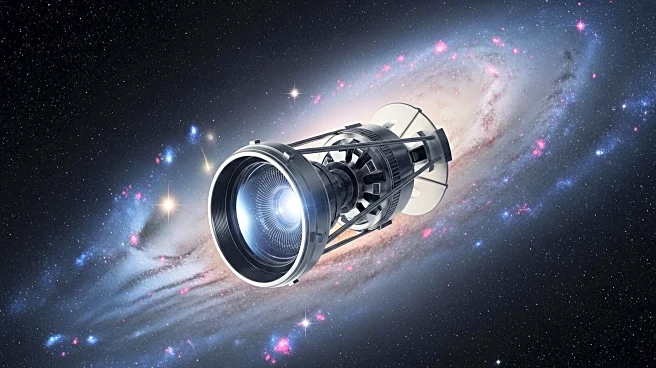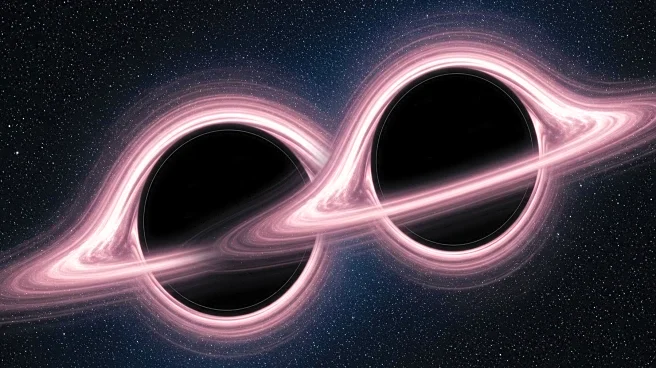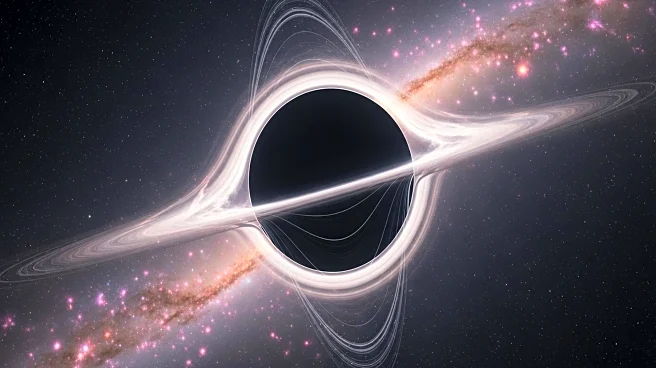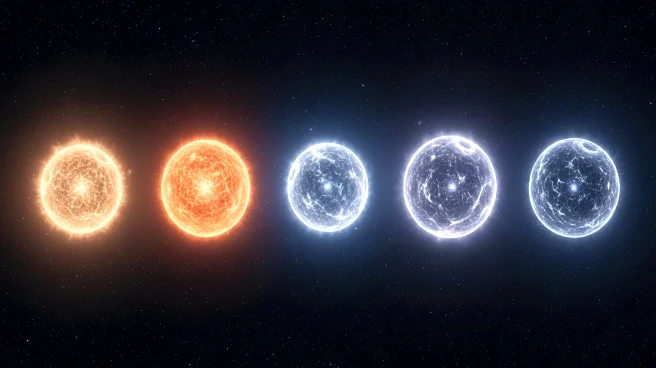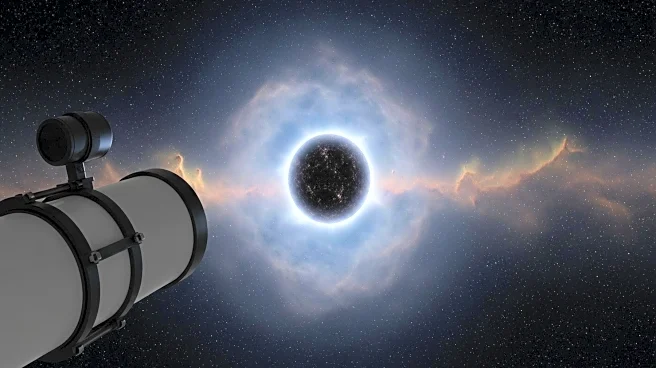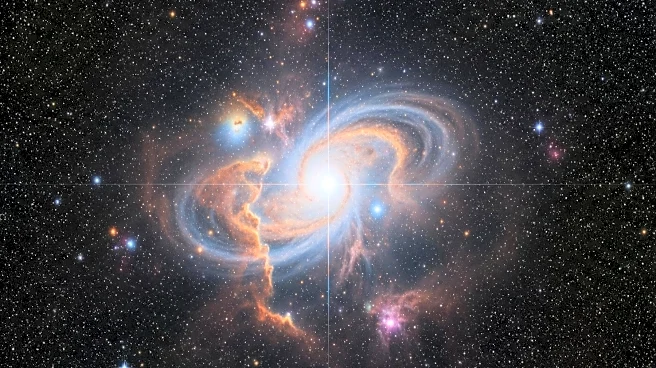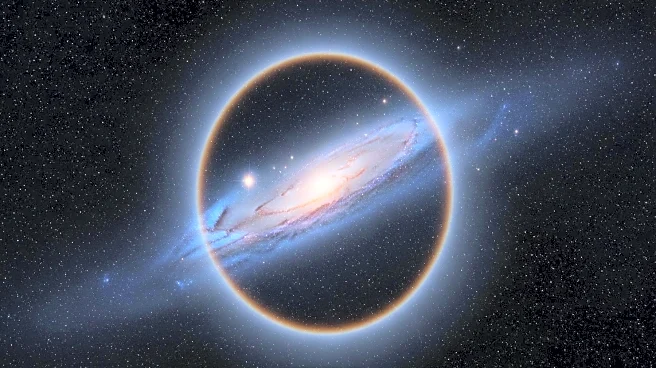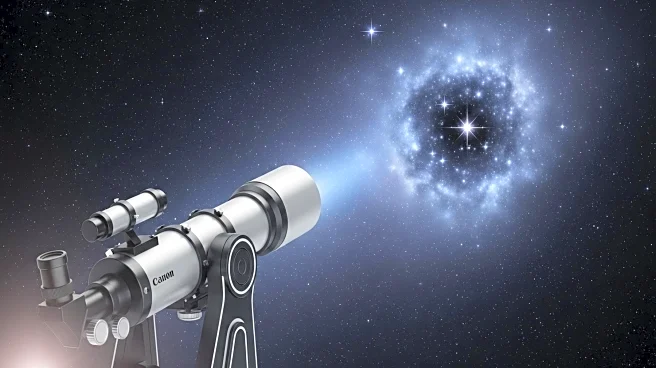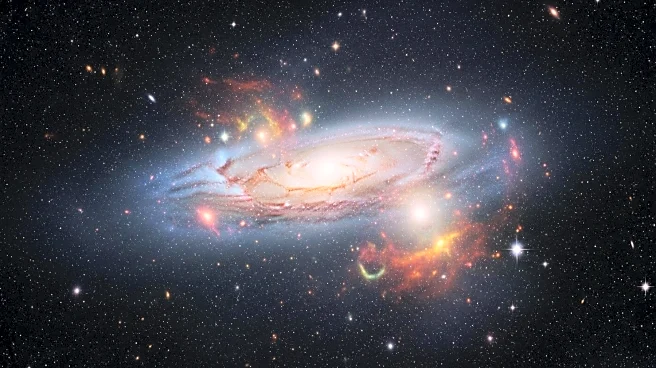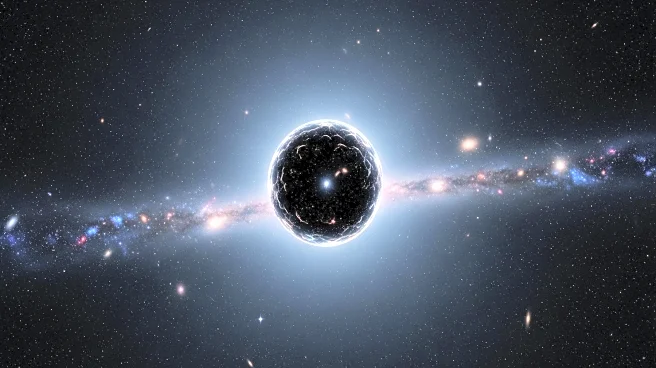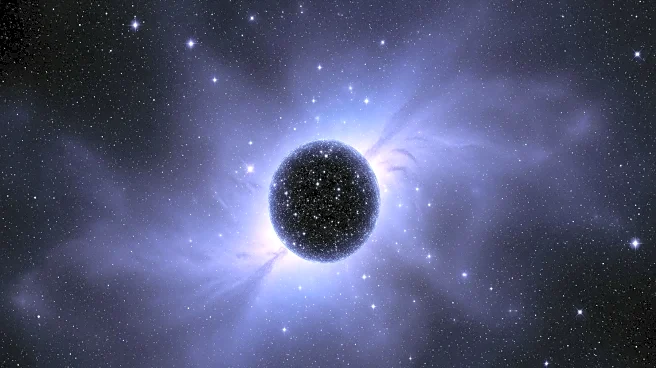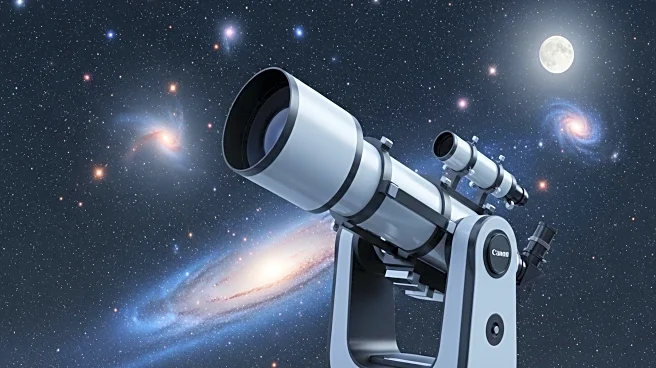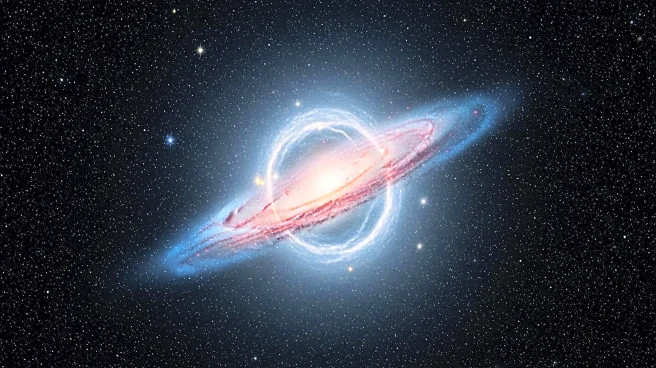What is the story about?
What's Happening?
Recent observations from the James Webb Space Telescope (JWST) have led to the identification of four extremely distant objects that may be supermassive dark stars, according to a study led by Cosmin Ilie of Colgate University. These stars, composed primarily of hydrogen and helium, are theorized to be supported against gravitational collapse by self-annihilating dark matter. The study, which includes contributions from researchers at the University of Pennsylvania and The University of Texas at Austin, suggests that these stars could solve astronomical puzzles related to distant galaxies and supermassive black holes. The concept of dark stars was first proposed by Katherine Freese and colleagues in 2008, and recent data from JWST's NIRCam and NIRSpec instruments have provided evidence supporting this theory.
Why It's Important?
The identification of supermassive dark stars could significantly advance the understanding of dark matter, a substance that constitutes about a quarter of the universe but remains largely mysterious. These findings could establish a new field of astronomy focused on dark matter-powered stars, offering insights into the nature of dark matter particles. Additionally, understanding these stars could explain the formation of supermassive black holes in the early universe, which are otherwise difficult to account for. This research could have profound implications for cosmology and the study of the universe's evolution.
What's Next?
Further analysis and confirmation of the spectral features observed in these objects are necessary to solidify the dark star interpretation. If confirmed, these findings could lead to new models of star formation in the early universe and potentially reveal interactions between dark matter and regular matter. Researchers may continue to use JWST and other telescopes to search for additional dark star candidates and study their properties, which could provide more clues about the nature of dark matter.
Beyond the Headlines
The discovery of supermassive dark stars could challenge existing theories about star formation and the role of dark matter in the universe. It may also prompt ethical discussions about the allocation of resources for space exploration and the prioritization of scientific research. The potential for dark stars to be embedded in metal-rich environments suggests complex interactions between different types of matter, which could lead to new insights into cosmic evolution.
AI Generated Content
Do you find this article useful?
